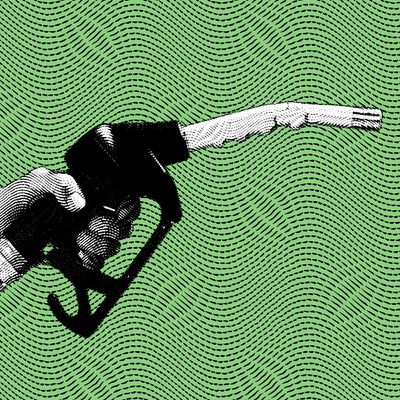
On Wednesday, the Labor Department released its most recent report on the state of what we all pay to live around here in the U.S., and the annual inflation rate ticked up for the second straight month. Blame gas and rent for driving most of the surge, but most of the things we pay for got a little bit more expensive. When it was all tallied up, the Consumer Price Index — the government’s broad cost-of-living gauge — spiked up to 3.7 percent in August after sinking to a two-year low of 3 percent in June and 3.2 percent in July. This was pretty sharply higher than what most economists had expected.
The pessimistic view is that inflation isn’t over and the Federal Reserve is going to jump into action to keep raising interest rates — making, for instance, a new home even further out of reach. But dig deeper into the numbers and there appear to be limits to this. For one, these spikes in price are likely temporary. “The rise in gas prices in August was the largest contributor to headline inflation and will not likely show up again next month,” Jeffrey Roach, the chief economist for LPL Financial, wrote in a note. (It’s always worth taking predictions of “temporary” increases with a grain of salt, though. Remember that the Fed itself was dead wrong by mistakenly calling the early months of this inflationary period “transient.” And Saudi Arabia certainly doesn’t appear to be acting like the tighter global oil supply is just a passing fad.) The rise in shelter costs are, as I’ve noted before, outdated and based on a stodgy method. The good news is that rents have basically been flat for a year; the bad news, according to Redfin, is that they are staying at around the all-time highs.
Look at it another way, and these prices are going up because the economy is strong. Wages have, up until August, outpaced inflation. Wall Street has all but called off its recession watch so it can get back to what it does best: gambling on tech companies that struggle to make money. The unemployment rate is still below 4 percent. Just a few days ago, Bloomberg published a piece full of people worrying that things are going too well.
Well, if you’re worried about people having too good of a time out there, the Fed is here to save the day. Bundled into the CPI is another measure, the so-called “core” CPI, which strips out food and gas prices; it’s a measure that the Fed pays closer attention to, and it, too, rose more than expected. Now, the central bank is all but certain to raise interest rates at least one more time this year. The question now is how much longer this is going to go on for, and if the Fed — which lost a good deal of credibility for its “transient” mistake — has, in fact, made what many observers consider to be another error. In June, the central bank’s chair, Jerome Powell, decided to skip a month before hiking interest rates again. When Powell first telegraphed that that might happen, it raised a bunch of questions — mostly, if the Fed is going to keep rates higher, why not just get it out of the way? Why prolong the pain? His answer was, essentially, that the Fed wanted to keep from going too far in the other direction and inducing a recession. It also helped that it kept the market guessing, which, in theory, keeps businesses from raising prices too much if they can predict an end to fiscal tightening. Is it a coincidence that we’ve had two months of inflation ticking up since then? These are counterfactuals, impossible to know for sure. In hindsight, though, this looks more like a stutter step when critics have insisted that the Fed should have stayed firm.
Yesterday, on the Social Network Formerly Known As Twitter, a video went viral of Tim Gurner — the guy who thinks that avocado toast is stopping you from buying a home — going full Main Character. “Unemployment has to jump 40 to 50 percent, in my view,” he said. “We need to see pain in the economy.”
The Fed appears like it’s going to give Gurner just what he’s asking for. When the Fed’s board meets again next week, it will probably hike interest rates again by another quarter of a percentage point to as much as 5.75 percent — the highest point since early 2001. Hikes have historically had a pretty direct relationship with unemployment — meaning that, when too much money goes toward interest payments, businesses tend to lay off workers — and though that hasn’t really happened so far this cycle, at some point, it will. It’s worth asking what this hike is intended to do, exactly. Another 0.25 percent to top off interest rates after two years of draconian increases doesn’t change things very much at all. If inflation keeps on rising during the next few months, don’t be surprised to see the Fed pushing rates up even more.






























